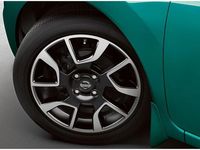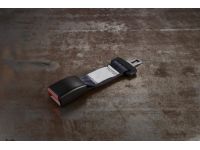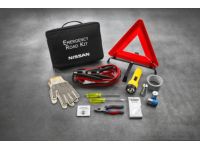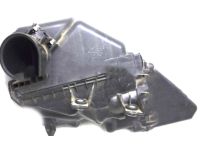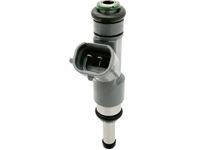- Live Chat
- 1-888-726-6993

Why choose NissanPartsDeal
- Quality Parts
To keep your car running at peak performance, you need Nissan Versa genuine parts from NissanPartsDeal.com. For years, we've been the leading online Nissan Versa parts store. At NissanPartsDeal.com all the parts in our catalog are inspected and tested by our team of experts to ensure optimal fit and performance.
- Unbeatable Prices
What makes NissanPartsDeal.com the best choice for Nissan Versa OEM parts? You get giant savings because our goal is to offer unbeatable prices. OEM parts are perfect for drivers who want the best products available but don't have the funds to splurge on expensive parts. Plus, Our products offer the same performance and reliability as their OEM counterparts at a fraction of their price.
- Fast Shipping
All the OEM Nissan Versa parts you need for routine maintenance and repair can be found in our complete Nissan Versa parts catalog. Having the best inventory available, your parts for Nissan Versa will arrive fast anywhere in the nation. Plus, all Nissan Versa auto parts purchases are risk-free as everything is expedited directly from dedicated authorized dealers and backed by the manufacturer's warranty, so you'll be back on the open road before you know it.
Popular Genuine Nissan Versa Parts
- Body Electrical Parts View More >
- Engine Mechanical Parts View More >
- Axle & Suspension Parts View More >
- Engine Electrical Parts View More >
- Miscellaneous Parts View More >
- Body (Side & Rear) Parts View More >
- Body (Front, Roof & Floor) Parts View More >
- Fuel & Engine Control Parts View More >
- Power Train Parts View More >
- Exhaust & Cooling Parts View More >
- Steering Parts View More >
- Brake Parts View More >
Shop Genuine Nissan Versa Parts with NissanPartsDeal.com
The Nissan Versa is a car model widely used in America, based on an extended wheelbase version of Nissan's B platform. Available as a five-door hatchback and a four-door sedan, it bridges the gap between compact and subcompact categories in Nissan's lineup. Featuring a refreshed exterior and interior design, improved power steering, and an updated powertrain, the Versa comes with a choice of a four-cylinder engine, with the larger variant coupled with a six-speed manual transmission. Built on Nissan's global V platform, the Versa targets the global sedan market with its introduction across 170 countries. Assembled in various locations in America, Africa, and Asia, the Versa is available in S, SV, and SL models, all powered by the 1.6 HR16DE engine. It offers fuel economy of up to 40 miles per gallon for CVT models. The SV Special Edition is the top model in the range, featuring Safety Shield driver assistance technology, push-button start, a touchscreen audio system, cruise control, and power windows and locks. Base models come with a standard five-speed manual transmission, while a continuously variable automatic transmission (CVT) is optional on the S model and standard on the SV and SR versions. The Versa remains one of the few small cars still available in North America in the face of the growing popularity of crossover SUVs.
Despite its sturdy build, the Nissan Versa, like all vehicles, is prone to wear and tear over time. Common issues include transmission failure, particularly evident around the 70,000-mile mark, as reported by Versa drivers. Symptoms include gear slippage, failure to accelerate or shift gears in time, incorrect gear indicator display, and inability to remove the key from the ignition. Essential parts to check include the shift cable, clutch disc, transmission pan, and automatic transmission filter. Engine failure, another significant problem, often manifests in a gradual breakdown. Early signs include squealing metallic noises, the power steering and A/C failing, consistent engine overheating, and reduced power, acceleration, and fuel economy. The intake manifold gasket, oil filter, serpentine belt, and drive belt are key components to check. Regular maintenance is crucial to maintaining the Versa's performance, but knowing which parts require attention is equally important. For instance, the door lock actuator can wear out with use, and the seat belt's pretensioner can activate rendering it useless. The headlight, wiper arm, emblem, and wiper blade may also degrade due to exposure to harsh conditions. Paying attention to these vulnerable yet essential parts is critical for vehicle safety.
Originating directly from Nissan, OEM parts excel in quality, longevity, and fitment. They undergo severe quality testing, ensuring its safety, durability, and performance that matches your original parts. In case your Nissan Versa requires OEM parts, such as Seat & Seat Belt, Body (Back Door & Rear Body), consider browsing through our comprehensive catalog of genuine Nissan Versa parts, competitively priced at the market's best price. Each of our parts come with a manufacturer's warranty. Plus, with our straightforward return policy and prompt delivery service, your shopping experience is bound to be an enjoyable one.
Nissan Versa Parts Questions & Answers
- Q: How to remove and install a throttle body on Nissan Versa?A: First of all, unplug the battery's negative cable. Clamp and disconnect the coolant hoses from the throttle body. Mount the new throttle body in the reverse order, replacing the O-ring. Tighten bolts in a crisscross pattern to the torque. Reconnect the battery and conduct the re-learn procedures.
- Q: How to remove and install the air filter housing on Nissan Versa?A: First of all, you can disconnect the Mass Air Flow (MAF) sensor connector. Also, detach the front half of the box from the air inlet duct. Separate the box halves and remove the air filter element. The installation process is the reverse of removal.
- Q: How to replace fuel injectors and Fuel Rail in a Nissan Versa?A: To replace the fuel rail and injectors, you can remove the intake manifold, the fuel supply line as well as the injector connectors. Unbolt and lift the fuel rail, removing the injectors and discarding the 0-rings. Reinstall injectors into the fuel rail, ensuring clips snap into place. Installation is the reverse of removal.



















































